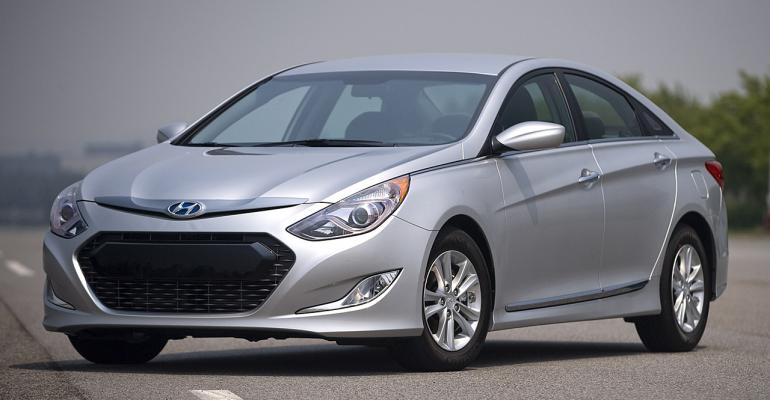Hyundai made news at the recent Detroit auto show with an announcement that it already is meeting the U.S.’s corporate average fuel economy fleet requirement for 2015 of 36 mpg (6.5 L/100 km).
In both marketing and press releases, the Korean auto maker maintains a staunch message that it has more models rated at 40 mpg (5.9 L/100 km) highway than its competitors. But it does not call out what technology is used to achieve that figure.
The brand particularly has shied away from releasing monthly deliveries of its Sonata Hybrid model, on sale for about a year.
However, Hyundai reveals to WardsAuto that it sold 10,368 Sonata Hybrids in 2011, placing the model sixth in alternative-powertrain passenger-car sales behind the Toyota Prius, Honda Insight, Lexus CT 200h, Honda CR-Z and Ford Fusion Hybrid.
While Hyundai U.S. CEO John Krafcik says Sonata Hybrid buyers like the car’s mix of design and fuel economy, and in some months last year the HEV sold second only to the Prius, he prefers that Hyundai remain “technology agnostic,” because hybrids have not proved to be a hit with consumers.
“If we can find a way to deliver outstanding real-world fuel economy and EPA (Environmental Protection Agency) estimates without the expense of hybrid technology, that’s better,” Krafcik says.
It’s been 12 years since Honda retailed the first hybrid-electric vehicle in the U.S., with its first-generation Insight. Despite the 23 hybrid cars and 14 light trucks available in the market today, HEVs only accounted for 2.1% of total light-vehicle sales last year, WardsAuto data shows.
American car buyers’ lack of enthusiasm for hybrids and U.S. regulators’ fondness for them worries Krafcik. “The scary thing is some of the regulations are going to drive the proliferation of hybrids and electric vehicles going forward. And those cars could overwhelm the number of customers who demand them.”
That would be a “sad situation,” he says, because auto makers will be forced to build cars consumers don’t want and then have to slash prices or add incentives to get them off dealer lots. “We’ve been trying to focus on (asking the government to) let us hit the CAFE number and don’t necessarily force a technology.”
Krafcik declines to cite a single key technology Hyundai plans to use to achieve future CAFE rules. Instead, he offers a list: increased use of lightweight steels; improved aerodynamics; continued development of low-rolling resistance tires; and advanced transmissions, including a future 10-speed automatic.
However, Hyundai is less sure of stop/start, which automatically turns off the car’s engine at idle and then restarts it with acceleration. “What we’ve found is, it’s difficult to show a 1-mpg (0.4 km/L) benefit, (per the EPA city-driving test), depending on how rounding goes,” he says.
The U.S. government has said it will allow auto makers to document real-world savings with stop/start to earn CAFE credits from 2017-2025, Krafcik says, but adds Hyundai engineers are aiming for better than a 1-mpg city-driving improvement.
If Hyundai cannot achieve its goal, “I think (stop/start) is going to be a tough case for us,” Krafcik says.





